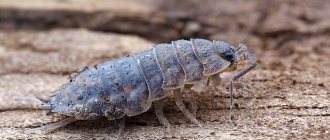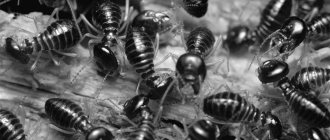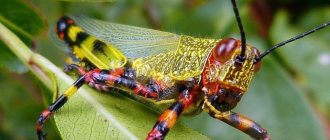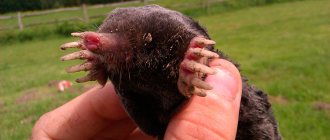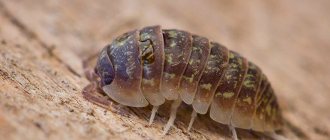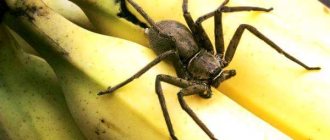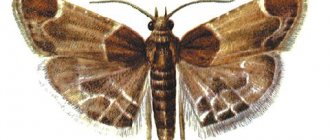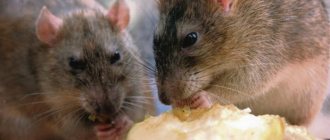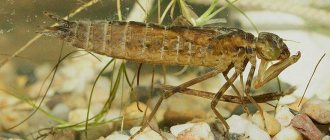In fact, woodlice is not an insect, but an ancient crustacean, which, under the influence of evolution and a changing climate, has decreased in size many times and adapted to life on land, while maintaining its craving for high humidity. They are found almost all over the world. Woodlice most often settle in places where there is an ideal combination of high humidity and heat. They feed mainly on plant humus, which can be found in abundance both in human homes and in the open air. In nature, woodlice can live in the garden, in the forest, near swamps and on the banks of reservoirs. In apartments, houses, hotels and other likely places, they mainly choose bathrooms, kitchens and rooms where the microclimate meets their needs.
Where do these crustaceans that look like insects come from in the apartment?
- They crawl from warm basements, from attics and from neighbors through ventilation and ducts where communications are laid.
- They are accidentally brought along with purchases from stores where there were conditions suitable for their life.
- They enter the apartment along with purchased indoor plants and bouquets of flowers.
- They independently crawl along walls from the street and penetrate through open windows, vents, and leaky joints of loggia frames.
- If the apartment is rented or purchased on the secondary housing market, then woodlice may be its original inhabitants and could have appeared here long before you appeared.
If woodlice enter the premises through communications or due to dilapidated repairs, then, in addition to baiting the pests, it is also necessary to make repairs, otherwise the woodlice will again make their way to you the same way after some time.
What it is?
Woodlice is classified as a subtype of crustaceans due to the fact that their body is covered with a shell (read more about what type, class and order the woodlice belongs to in this article). The average length of one individual is 1 cm (what do woodlice look like?). Arthropods are active at night, as they cannot tolerate bright light and noise. During the day, it is quite difficult to notice woodlice in an apartment (if the number of individuals is small).
Reference. The movements of woodlice are fast, and individuals are dexterous. If there is a threat to life, they curl up into balls. Life expectancy is 10-12 months.
Common habitats are under the bathtub, behind the toilet, near the boiler, in closets with supplies of vegetables (we talked more about where they come from and where woodlice live and what are the reasons for their appearance in the apartment in a separate article). This is explained by increased humidity and the presence of the necessary microflora for nutrition. Of particular danger to an apartment are wood lice that have entered the premises without permission through the ventilation system from the basement, roof or street. Such individuals actively reproduce and are difficult to fight.
Lifestyle of crustaceans
Woodlice are representatives of the family of crustaceans of the order Isopods and the phylum arthropods , having a small (up to 20 mm) oval body of marble-gray or brownish-brown color. The shell covering the body is divided into 8 segments, 7 of which contain pairs of thoracic legs.
These arthropods live on land, but choose only those places with high humidity and warmth as a place of settlement. This is precisely the reason for their appearance in the bathroom or toilet, under the sink or in the greenhouse and cellar, under compost mass, stones or damp boards in the garden.
Woodlice are not active during the day; they are nocturnal, leaving their hiding places in search of food. Their food is:
- rot;
- dead and decaying plants;
- moss;
- fallen leaves and other organic debris.
In addition, they also feed on living plants, eating their root system.
Woodlice are agile and fast; when threatened, they curl into balls. These representatives of crustaceans reproduce with eggs in April-May and live on average from 9 to 12 months.
What's the harm?
Are wood lice dangerous for people in an apartment and why? Woodlice have earned a bad reputation because of their unpleasant appearance and their tendency to gather in colonies. For many, just looking at such a creature creates a persistent feeling of disgust, and constant contact (if woodlice appear as soon as you turn on the light) can provoke stress or a nervous breakdown.
Despite their terrifying appearance, these representatives of crustaceans are practically safe for humans. They do not bite, do not spoil food, do not contaminate water, do not buzz and do not penetrate the body. But individuals feed not only on living plants, but also on rotten plants.
There remains a threat that woodlice on their paws can carry pathogens of infectious diseases (fungal spores, lichen, bacteria). But this issue remains controversial, since there is no scientific evidence or confirmation.
Woodlice live in the bathroom, toilet, basement or kitchen. If these individuals appear in the premises, you need to pay attention to the condition of the sewage system and water supply. These systems may develop leaks or malfunctions that are invisible to the human eye. If the problem is not solved, the woodlice colony will increase.
For plants
For indoor plants, these crustaceans pose the greatest danger. The harm is as follows:
- eating live leaves;
- damage and violation of root integrity;
- soil compaction (oxygen loss occurs).
On a note. A sign that a bush is being attacked by woodlice is small holes in the leaves and flowers. For individuals, 14-15 days are enough for the home flower to completely wither and die.
What does a woodlice look like?
To understand what a woodlice looks like and not to confuse it with other moisture-loving parasites found indoors in the Central region of Russia, just look at a photograph of the insect. Woodlouse has a number of distinctive features:
- In the Central region of Russia, woodlice is a beetle ranging in size from 0.5 millimeters to 2 centimeters in length with an oval, slightly flattened body.
- The entire body of the insect is covered with chitinous segments, which from the outside look like sheets of armor, slightly overlapping each other.
- Woodlice have whiskers, often as long as their entire body.
- In all external features, woodlice is most similar to prehistoric arthropods - trilobites, but in greatly reduced sizes.
- White woodlice are not a separate species, but a stage of animal development. Color change occurs due to molting.
- You will never see woodlice larvae, as these crustaceans carry their offspring in a special pouch on their abdomen. The brood leaves only after it is fully formed, so young woodlice are simply smaller in size than adults.
Woodlice are very often confused with other insects that can be found in damp and warm places in an apartment, primarily with silverfish and two-tailed insects, but even a quick glance at the photo of each of these insects is enough to understand how much they differ.
Is it worth fighting them?
Woodlice do not cause much harm, but there is no need to “breed” them in the apartment. Pest extermination is an important and necessary procedure. These representatives of crustaceans do not bite people or animals , but they disturb the comfort in the apartment. The appearance of woodlice is a signal for urgent sanitary treatment of the premises (where do woodlice come from?). This will allow for timely destruction of individuals and reduce the risk of possible spread of fungi or lichen.
It is necessary to distinguish woodlice from silverfish. The latter prefer dryness, eat sugar and leftover food. Silverfish have smaller shells and longer legs. These individuals belong to insects. The effectiveness of combating it depends on the exact identification of the type of pest (what types of woodlice are there and how to deal with them?).
When is urgent woodlice extermination required?
- The number of individuals does not decrease, but increases.
- The owner of the apartment sees woodlice even during the day.
- Individuals appear outside the boundaries of possible or usual location (outside the bathroom).
Life cycle of an insect
Woodlice appears throughout the year; the most active times are considered to be spring and autumn. Their parthenogenesis occurs in the summer. Reproduction occurs bisexually. This means that in order for procreation to occur, a male and a female are needed.
The reproduction of woodlice is a very interesting process, because it is endowed with a number of features. They can mate in any season, but the main action of the male is to wait for the molt, otherwise all two holes will be closed. The male finds the female in advance and stays next to her until the molting begins. To begin with, he helps her completely get rid of the scales, and only after that he begins the mating process.
Woodlice larvae settle in a brood sac filled with liquid, and emerge from there after full maturation. After the hatching process, molting must occur several times, and only after that, the insect reaches sexual maturity.
The lifespan of woodlice directly depends on their living conditions, and ranges from approximately 9-12 months.
Behavior
The life of woodlice depends entirely on reflexes. Therefore, they do not specifically look for a suitable habitat. The main role in choosing a place is played by speed of movement and agility. After all, if the conditions are favorable, the dampness and moisture levels are too high, the woodlice move very slowly or freeze, enjoying the situation. But in dry air and hot temperatures, they begin to quickly rotate and move at high speed in order to leave the unpleasant environment.
If there is a risk of drying out, many crustaceans can tighten parts of the outer covering of the body, like a shrinking accordion. At the same time, her body decreases significantly in size so that the area of moisture loss is smaller.
To escape from the clutches of a predator, to escape from right under its nose, wood lice use the rotation technique, that is, they randomly rotate in one direction or the other.
Contraindications for use
Medicinal products based on woodlice herb cannot be used if you have an individual allergic reaction to the plant. Chickweed is good for lowering blood pressure, so products from this herb are useful for hypertensive patients, but are contraindicated for hypotension. If you have problems with the stomach and intestines, gastritis, or ulcers, you should consult a doctor. Counseling is also necessary for pregnant women, infants and young children.
The small white flowers of chickweed do not open in rainy weather. A folk sign says that if the corollas have not opened in the morning, the day will be rainy. This plant is very fond of poultry, even parrots eat it with pleasure.
“Important: all information on the site is provided for informational purposes only. Before applying any recommendations, consult with a specialized specialist. Neither the editors nor the authors are responsible for any possible harm caused by the materials.”
Beneficial features
This miniature plant is rich in various beneficial vitamins and microelements, tannins and alkaloids, essential oils and flavonoids. Its benefits are as follows:
- Strengthens the human body.
- Capable of stopping bleeding.
- Heals wounds and cuts.
- Has expectorant properties.
- Relieves inflammatory processes.
- Protects against germs.
- Acts as a laxative.
- Tones.
- Is a diuretic.
- Lowers blood pressure.
- Dilates blood vessels.
- Pain relief.
These useful components make it possible to use woodlice in the treatment of various ailments and various health problems.
The expectorant properties help it treat the respiratory organs - lungs, bronchi. When they become inflamed, it softens well and helps relieve cough.
It is used for diseases of the musculoskeletal system and helps in the treatment of joint diseases - rheumatism and arthritis, radiculitis and osteochondrosis.
In the treatment of diseases of the urinary system, it helps in crushing and removing kidney stones. Has a diuretic effect, relieves swelling.
For stomach problems, it is used as an antispasmodic to reduce pain due to cramps and colic. It is used to treat hemorrhoids and enterocolitis. The herb is used as a choleretic agent.
It has found application in the treatment of diseases of the heart and blood vessels. For hypertension, it is used as an antihypertensive agent, reducing high blood pressure in a person. Helps relieve symptoms of vegetative-vascular dystonia and cardiac ischemia.
The use of woodlice has a good effect in the treatment of the thyroid gland. It treats diabetes mellitus and metabolic disorders.
For gynecological problems, women are prescribed a decoction of woodlice for oral administration and douching. They treat menstrual irregularities and inflammatory diseases of the female organs.
Woodlice is actively used in dermatology and allergology. It is prescribed as an anti-inflammatory and analgesic to patients suffering from various skin diseases - dermatitis, eczema, trophic ulcers and bedsores. Eye inflammation is also treated.
The high content of natural nutrients allows it to be used to prevent colds. The plant is a natural immune stimulant and helps with vitamin deficiencies and restoration of the human body after serious illnesses.
Thanks to potassium and iron, which are contained in large quantities in woodlice, it is possible to treat anemia and improve hemoglobin levels. The hematopoietic system responds positively to treatment with this herb.
It is prescribed for the treatment of obesity. Being a stimulator of metabolic processes in the body, it helps remove excess fluid and improve digestion, which promotes weight loss.
Its anti-aging and tonic properties make it possible to use it in cosmetology both for the treatment of skin problems: rashes, acne, boils, and for the prevention of aging.
The high content of nutrients in it helps with vitamin deficiencies, especially in winter and spring. It is used in cooking, added to salads, cabbage soup, prepared drinks and baked pies. To do this, the grass must be collected before flowering, while it is juicy.
Traditional methods
Every housewife should know how to get rid of woodlice in the house so that such a question does not take you by surprise. Always start the fight with safe folk methods. The necessary substances are always available on the farm; they are not as expensive as chemicals. And sometimes they help as well as professional means.
Traditional methods:
One of the most popular powders for getting rid of insects, including woodlice, is boric acid. Having prepared an aqueous solution, it is sprayed in places where arthropods accumulate. The procedure is repeated 3-5 times until the insects completely disappear. Preparation of the composition: 10 g of powder per 10 liters of water. Another common remedy for woodlice is a solution prepared from dry kvass and hot water. The operating principle is similar to the previous one. Preparation of the solution: 1 part kvass and 5 parts water. Prepare a mixture of pepper, soda and tobacco, taking 3 g of each. Brew it with boiling water. Spray into the toilet and bathroom. After some time, the solution is washed off, as the mixture can harm pets and people. Identified nests and clusters of woodlice are treated with diluted bleach. Dilute 45 g of powder in 1 liter of water
Use with caution, in the absence of children and animals. Table salt can scare away individuals. It is scattered in problem areas of the kitchen and bathroom
It is unlikely that the insects will die, but they will leave the room for a long time.
After carrying out work to combat woodlice, observe hygiene rules and keep the premises in proper order.
